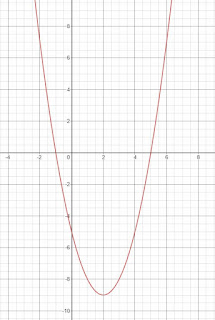Implicit Differentiation
This is a simple guide about how to do implicit differentiation Explained in a simple way, if there is a function that is not in the form y = some expression with only x. There are many instances where y cannot be solved explicitly in terms of x, so implicit differentiation required. Other times, it is much faster and “cleaner” to use implicit differentiation For example, given the equation x^2 + y^2 =49, implicit differentiation is the easiest way to find dy/dx To do implicit differentiation, know that the derivative of y is dy/dx. In other words simply add a dy/dx after every y when the derivative is taken. Essentially, this is a continuation of the chain rule. Then, solve for dy/dx in terms of x and y Steps d/dx the entire equation Differentiate x as normal When differentiating y, add a dy/dx afterwards Solve for dy/dx in terms of x and y Example Problems x^2 + y^2 = 49 d/dx(x^2 + y^2) = 49 2x + 2y(dy/dx) = 0 Solve for dy/dx so dy/dx...
